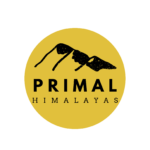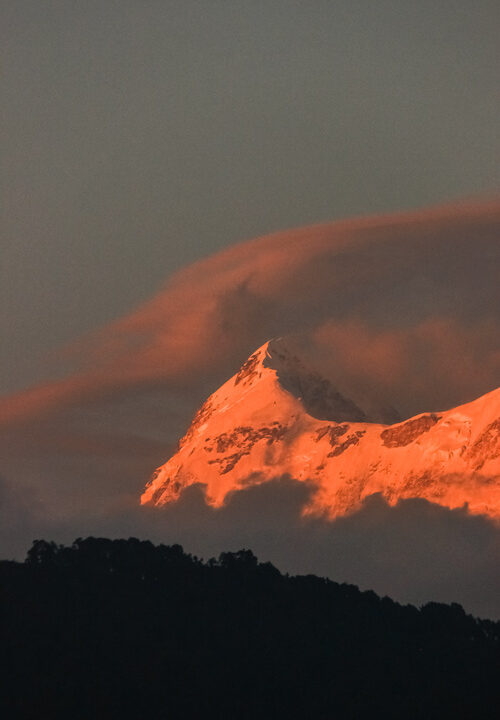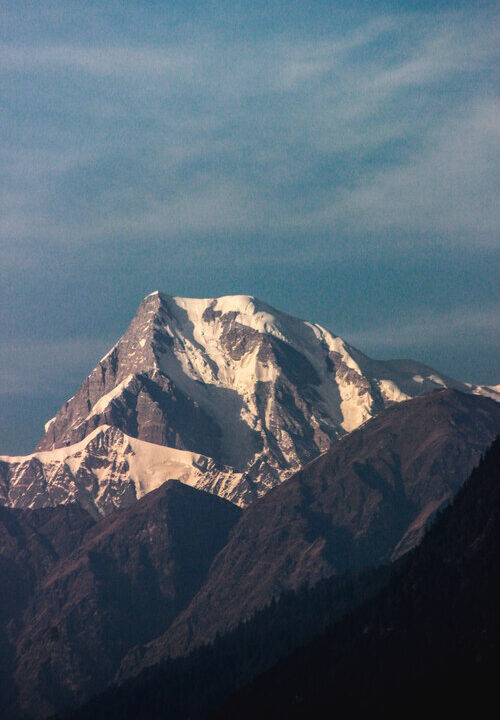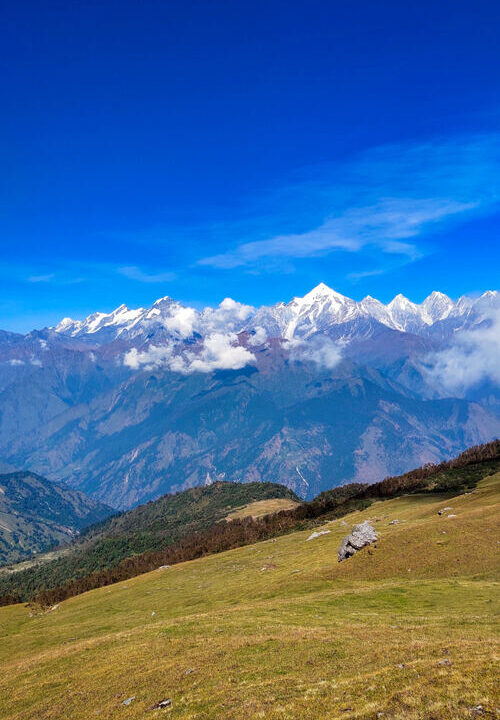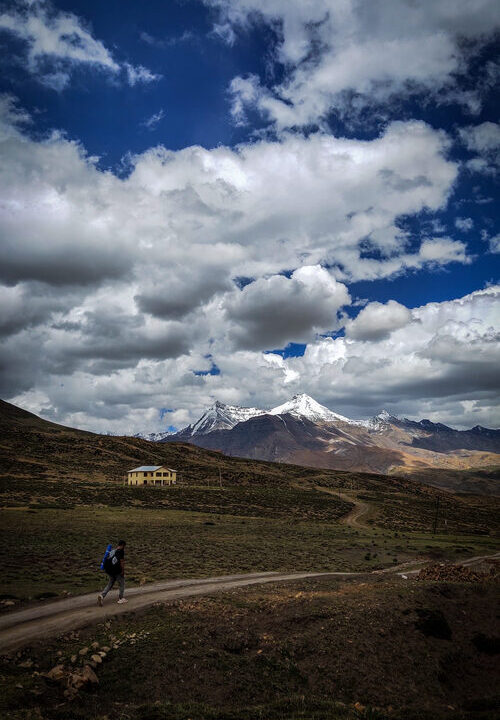


PRIMAL STYLE TREKKING
- 1. Flexibility and Independence: Alpine style trekking allows trekkers to be more flexible with their itineraries and routes. Since they carry all their gear and supplies, they are not dependent on fixed campsites or infrastructure, giving them the freedom to explore remote areas and adjust their plans as needed. Since your team comprises of you and your trek leader, you can choose the start date of a trek. You also get to decide the pace of the trek. Do you want to slow down on the meadows and pick up speed through rocky terrain? How about camping at a spot further up the trail? It really is all up to you and what you would like to do!
2. Speed and Efficiency: Trekkers traveling in alpine style aim to move quickly and efficiently through terrain. With lightweight gear and minimalistic setups, they can cover greater distances in shorter amounts of time compared to traditional trekking methods, which can be particularly advantageous in challenging terrain or adverse weather conditions.
3. Minimal Environmental Impact: Alpine style trekking promotes Leave No Trace principles, minimizing the impact on the environment. Since our team sizes will be small and we don’t take any additional staff on the trails, our footprint is drastically reduced. We also wont be carrying any kitchen tents. Instead you get a delightful chance to cook food in the vestibules of your own tents! Trekkers carry out all their waste, including biodegradable items, and adhere to practices that preserve the natural landscape. The waste you collect on the way will be stored in your backpacks which you will bring back to the nearest town and dispose in the designated place. Lastly we won’t be carrying any toilet tents. On a Alpine trek, you are in for a new pooping experience. You dig a cat hole and cover it after defecation which speeds up decomposition and maintains a balanced and healthy eco-system in the mountains.
4. Physical Challenge and Skill Development: Alpine style trekking demands physical fitness, as trekkers often traverse rugged terrain, steep ascents, and high altitudes. It provides an opportunity for individuals to challenge themselves physically and mentally while honing their outdoor skills such as route finding, navigation, and wilderness survival. When we shifted from a self sustainable style of hiking to a service oriented model, one distinct change we noticed was in the stories our participants brought back from their treks. When trekkers participated in the self sustainable model, they returned with thrilling narratives of adventures along with key skills they picked up and learnt while trekking. The adventure component is present to this day. But stories of skills people picked up reduced substantially once we shifted to a service oriented model.
5. Closer Connection to Nature: With fewer distractions and a greater focus on the surroundings, alpine style trekkers can forge a deeper connection with nature. The immersive experience of being in remote and pristine environments enhances appreciation for natural beauty and fosters a sense of awe and respect for the wilderness.
6. Cost-Effectiveness: Since alpine style trekking typically involves carrying one’s gear and supplies, there’s often less reliance on expensive equipment or guided tours. This can make it a more cost-effective option for outdoor enthusiasts who prefer self-guided adventures.
7. Adaptability to Changing Conditions: Alpine style trekkers develop skills for adapting to unpredictable weather and terrain conditions. With their lightweight setups and versatile gear, they are better equipped to respond to unexpected challenges and changes in the environment.
8. Sense of Accomplishment: Completing an alpine style trek, particularly in challenging terrain or remote locations, can instill a profound sense of accomplishment and satisfaction. The self-reliance and resilience required for such endeavors contribute to personal growth and confidence.
Overall, alpine style trekking offers a unique and rewarding outdoor experience that emphasizes self-sufficiency, exploration, and a deeper connection with nature.
HOW ALPINE STYLE TREKKING IS DIFFERENT FROM ORGANISED TREKS
Alpine style trekking and trekking with organizers represent two distinct approaches to experiencing the outdoors. Here's how they differ:
1. Independence vs. Guided Experience:
- Alpine style trekking emphasizes self-sufficiency and independence. Trekkers typically plan and execute their routes, carry their own gear, and rely on their skills for navigation and survival.
- Trekking with organizers involves joining a guided expedition where a professional team takes care of logistics, provides equipment, and leads the group along predetermined routes. Participants often have less responsibility for planning and decision-making.
2. Flexibility and Spontaneity
- Alpine style trekking allows for greater flexibility in route selection, pace, and itinerary adjustments. Trekkers can adapt to changing conditions and explore off-the-beaten-path destinations.
- Organized treks follow set itineraries with fixed schedules, accommodation arrangements, and planned activities. While this can provide convenience and structure, it may limit opportunities for spontaneous exploration.
3. Skill and Experience Requirements:
- Alpine style trekking demands a higher level of outdoor skills, including navigation, wilderness first aid, and mountaineering techniques. Trekkers must be prepared to handle emergencies and adverse conditions on their own.
- Organized treks cater to a wider range of participants, including beginners and those with limited outdoor experience. Guides offer instruction and support, making trekking accessible to individuals who may not have the skills or confidence to venture out independently.
4. Cost and Logistics:
- Alpine style trekking can be more cost-effective since trekkers are responsible for their own expenses, such as gear rental, permits, and food supplies. However, initial investments in equipment and training may be required.
- Organized treks typically involve higher upfront costs, as fees cover guide services, accommodations, meals, and transportation. However, participants benefit from the convenience of having logistics taken care of by the organizers.
5. Risk Management:
- Alpine style trekking places greater emphasis on personal risk management and decision-making. Trekkers must assess hazards, such as weather, terrain, and wildlife, and take appropriate precautions to ensure their safety.
- Organized treks prioritize safety through risk assessment, group supervision, and emergency protocols implemented by experienced guides. Participants can rely on the expertise of the team to mitigate risks and respond to emergencies effectively.
Overall, the choice between Alpine style trekking and trekking with organizers depends on individual preferences, experience levels, and comfort with outdoor skills. Both options offer unique advantages and experiences, allowing enthusiasts to explore the wilderness in ways that align with their goals and abilities.
the ultimate guide for new member

Alipne Trek
On Primal Himalayas Alpine trek, you get the exciting opportunity of progressing from being a participant in a trek to a trekker with tangible roles and responsibilities in tandem with your Trek Leader.
Before a trek, you get to participate in the pre-trek planning process on equal footing with your trek leader.
You will discuss your physical fitness training strategies, prepare a packing list along with the equipment you will need to carry, plan your food ration, look into topography, routes etc.
During the trek, you get to particpate in all aspects of trekking. Since your team will essentially comprise of less members and your trek leader, your role and responsibility in the team increases multifold.
With your trek leader, you will be required to
- Plan the route
- Decide on a pace
- Choose campsites for the day
- Set up camp
- Cook food etc
We get it that some of these responsibilities may sound daunting for both new and seasoned trekkers. Please don’t let this worry you though. You will have plenty of help from our end and from your trek leader as well.
The idea with Primal is to introduce participants to a self sustainable style of hiking right from the beginning.
With our current model, participants progress from a service oriented model to a self sustainable style over many years. Primal allows us to bring this experience to trekkers much quicker!


Participant Selection Criteria:
Contrary to our group expeditions, please note that bookings for Primal Alpine follow a two step selection procedure.
Since the roles and responsibilities of a trekker are more defined here, we will individually assess your skill set and suggest a suitable trek/expedition.
The selection criteria will broadly be based on the following:
- Your Experience
- Physical fitness
- Team spirit (assesed from previous treks you have done)
- Eagerness to take responsibility outdoors.
